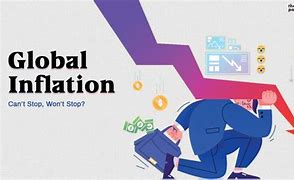
Inflation is a big topic for economists, governments, and families everywhere. In recent years, inflation rates have gone up and down due to factors like the COVID-19 pandemic, political tensions, supply chain issues, and government money policies. Knowing about inflation is important for predicting the economy, how much people can buy, and overall financial health. In this article, we’ll look at what causes inflation, how it affects the global economy, and what countries are doing to keep it in check.
What is Inflation?
Inflation is when prices for goods and services go up over time. If inflation rises, the money people have buys less than before. Central banks, like the Federal Reserve in the U.S. or the European Central Bank, pay close attention to inflation so they can change their money policies when needed.
There are two main types of inflation. Demand-pull inflation happens when demand for goods and services is higher than what’s available, leading to price increases. Cost-push inflation occurs when the cost of production goes up, like when wages or raw material prices rise, making everything more expensive for consumers.
The Aftermath of the Pandemic
The COVID-19 pandemic caused major disruptions globally. It led to supply shortages, increased demand for certain products, and lots of government money being pumped into the economy. Because of this, inflation shot up as economies tried to bounce back, causing prices to rise sharply in many areas.
For instance, shipping costs went way up because there weren’t enough containers and ports were congested. Many countries also faced labor shortages, pushing wages higher and adding to inflation. All these factors together made inflation rise to levels not seen in a long time.
Geopolitical Issues and Energy Costs
Political issues have also impacted inflation. For example, the war in Ukraine affected energy prices. Ukraine is a major supplier of natural gas and oil, so disruptions there caused energy prices to soar. Higher energy costs mean that making goods and services also gets more expensive, which contributes to cost-push inflation.
Consumers are feeling this pinch as they pay more for heating, electricity, and gas. This inflation hit countries all over, making governments consider different ways to help, like cutting taxes or providing energy subsidies.
Supply Chain Woes
Supply chain problems have been another big reason for inflation. The supply chain depends on factories and transportation, and the pandemic forced many factories to close. To make things worse, labor shortages and shipping delays piled on. With fewer goods available, prices went up.
One clear example is the semiconductor industry, where a chip shortage drove up prices for electronics and cars. The lack of raw materials like metals and food also raised costs in construction and farming.
Central Banks and Interest Rates
To fight rising inflation, many central banks have started increasing interest rates. This is meant to make borrowing more expensive, which can help slow down spending and cool off the economy.
But there’s a downside to raising interest rates. It can slow down economic growth since businesses and people cut back on spending. For example, in 2023, the U.S. Federal Reserve raised interest rates multiple times to control inflation, and other banks followed suit. There are worries about a possible global recession as economies adjust to this tighter financial situation.
Challenges for Emerging Markets
Emerging markets have their own inflation issues because they rely heavily on imports for things like energy and food. When global prices for these goods rise, they get hit harder. If their currency loses value, the cost of imports goes even higher.
For many of these countries, inflation can lower incomes and worsen poverty. Central banks in these nations face a tough choice: raise interest rates to manage inflation without hurting growth and increasing inequality.
Looking Ahead: What’s Next?
In the short term, global inflation is expected to stay unpredictable. Several things will shape how inflation changes:
- Energy Prices: If the political situation worsens, energy prices might stay high and add to inflation.
- Supply Chain Recovery: As supply chains get back on track, some prices may level off, but full recovery could take time.
- Money Policies: The actions of central banks to control inflation through rate hikes will weigh on future inflation levels. While this can help, it might also slow down economic growth worldwide.
In the long run, changes in technology, trade, and consumer habits will affect inflation.
Wrapping Up
The inflation trends today come from many interconnected factors. Everyone—from governments to consumers—affects inflation. While inflation can be tough, it can also lead to new ideas and adjustments. By knowing what’s happening, we can better handle the changing economy and plan for a more stable future.
As inflation shifts, staying informed is essential. This helps consumers protect their buying power and companies prepare for shifts in the economy.





